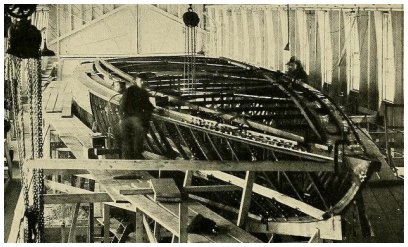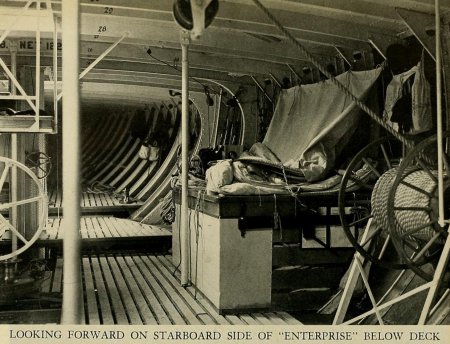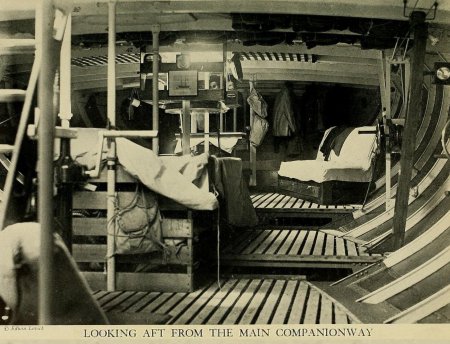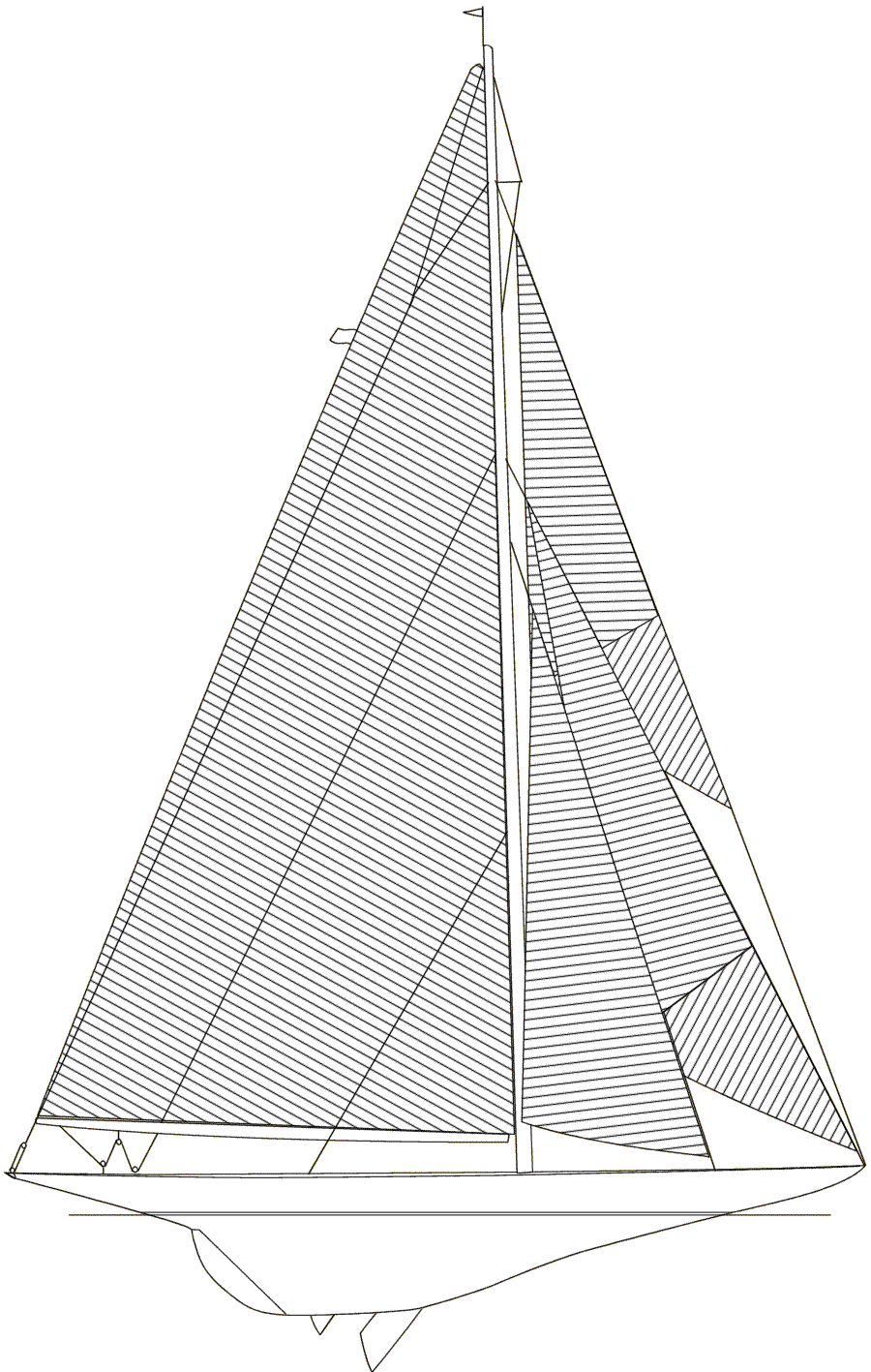Yves GARY Hits: 5846
Category: ENTERPRISE
 First American defender of the J Class on 1930
First American defender of the J Class on 1930W. Starling Burgess was requested to design and the Herreshoff Manufacturing Company to build the boat. Enterprise's lead keel was cast on October 5, 1929. She was in frame by February 1, 1930, plated by March 25, and decked by April 3.
Enterprise was launched on April 14, christened by Mrs. Winthrop W. Aldrich, her sponsor, and assisted by Governor Case of Rhode Island.
Just as the Enterprise's stern projected beyond the open doors of the south shop, the fog burned off and the sun shone brightly — an auspicious omen! Ten minutes later she was afloat and clear of the railway. Two hours earlier Shamrock V had been sent down the ways at Gosport, England.
 Her bronze underbody was smooth and highly polished, a pleasing contrast to the white topsides. The lead keel (where it projected below the plating) and the wooden rudder, except for the knife-edge bronze plating forming its after end, were also painted white. The hull plates were flush at vertical intersections, held together by butt straps riveted from the inside, and lapped at horizontal intersections. In order to save the weight of liners, amounting to some 1,500 pounds, each plate was joggled back to the frame where the overlap with the adjoining plate ended. This gave the appearance on the outboard side of a series of parallel strips of metal about 3 inches wide running fore and aft the entire length of the boat — the subject of much comment throughout the season.
Her bronze underbody was smooth and highly polished, a pleasing contrast to the white topsides. The lead keel (where it projected below the plating) and the wooden rudder, except for the knife-edge bronze plating forming its after end, were also painted white. The hull plates were flush at vertical intersections, held together by butt straps riveted from the inside, and lapped at horizontal intersections. In order to save the weight of liners, amounting to some 1,500 pounds, each plate was joggled back to the frame where the overlap with the adjoining plate ended. This gave the appearance on the outboard side of a series of parallel strips of metal about 3 inches wide running fore and aft the entire length of the boat — the subject of much comment throughout the season.
Everyone was much impressed with the clean appearance of Enterprise's deck. She had no outer rail, the white topsides being rounded where they blended into white waterways, a foot wide and encircling a raised white pine deck. There were but four openings in this deck, all on the centre line, a round sail hatch forward of the mast, a skylight and companionway hatch aft of it, and a small round navigator's cockpit forward of the binnacle. The forward end of the skylight hatch formed a cockpit for the tween decks man, about whom more anon.  There were two binnacles on deck, a steering binnacle forward of the wheel and a smaller one for the navigator in front of his cockpit. Two small capstans were visible forward and two aft for spinnaker and main boom guys and two larger ones on the centre line amidships for the jib topsail sheets. Duralumin pipe rails about 3 inches high for foot and hand grips, and a few necessary cleats and staples completed the inventory of deck fittings.
There were two binnacles on deck, a steering binnacle forward of the wheel and a smaller one for the navigator in front of his cockpit. Two small capstans were visible forward and two aft for spinnaker and main boom guys and two larger ones on the centre line amidships for the jib topsail sheets. Duralumin pipe rails about 3 inches high for foot and hand grips, and a few necessary cleats and staples completed the inventory of deck fittings.
Below, the deck was made of white pine slats 3 inches wide, hollowed underneath, and 1 inch apart. This arrangement proved most satisfactory. It saved weight, gave an excellent footing, prevented any trouble from expansion of the wood, and insured adequate ventilation for the bilge. On this deck were three sail lockers, one forward on the port side and one on each side amidships, and aft two settees and a small swinging table intended for the afterguard's lunch. Numerous winches, secured to the frames on either side, were within easy reach. There were no partitions or bulk-heads, the interior of the boat giving the impression of a great hollow shell. It proved to be particularly resonant. Beating to windward in a head sea the noise of the waves crashing against the bows was terrific.
 |
 |
|
|
||||||||||||||||||||||||||||||||||||||||||||||

Download the MODEL FOR DELFTSHIP : Hull only
Download the MODEL FOR DELFTSHIP : Full model


